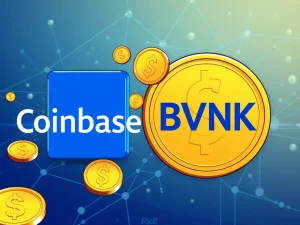Blockchain in Sports: Revolutionizing Core Infrastructure for Unprecedented Fan Engagement

The landscape of professional sports is undergoing a significant transformation. Once seen as a mere marketing vehicle for new technologies, **blockchain in sports** has now emerged as indispensable core infrastructure. This shift moves beyond simple sponsorships, embedding distributed ledger technology into the very fabric of stadium operations and fan experiences. Cryptocurrency enthusiasts and industry observers alike are witnessing a profound integration, where blockchain solutions are solving real-world challenges across the global sports ecosystem.
The Evolution of Blockchain in Sports Infrastructure
Initially, the interaction between crypto and sports was largely superficial. Early cycles saw numerous naming-rights deals. Exchange logos frequently appeared on NBA arenas, for instance. Crypto sponsorships in sports achieved national visibility. While these partnerships boosted brand awareness for crypto companies, they often lacked deep, tangible value within the sports ecosystem itself. However, a significant evolution has occurred since then. Sports organizations are now embracing blockchain for mission-critical functions. This adoption positions them as decisive buyers, effectively carrying blockchain into everyday fan interactions. Consequently, the technology is no longer just a promotional tool. It has become a foundational element of modern **sports infrastructure**.
Today, leagues, teams, and venues deploy verifiable ticketing, identity management, and rights-management systems. These operate as mission-critical infrastructure, scaling effectively for stadium-sized events. This practical application represents a profound change. Sports has thus become a crucial distribution channel for blockchain’s mainstream moment. The focus has shifted from mere visibility to embedding real, operational value. The follow-through includes an operational agenda addressing ticketing fraud, verifiable player data, smarter fan engagement, and transparent contracts.
Revolutionizing Verifiable Ticketing and Data Management
Operational efficiency drives the sports world. This current cycle shows that the supply side has caught up considerably. Blockchain teams now deliver production-ready ticketing, identity, and settlement modules. These solutions offer clear advantages. **Verifiable ticketing** is a prime example. It effectively curbs fraud, ensuring that fans purchase authentic tickets. Furthermore, it enforces secondary-market rules, creating a fairer environment for ticket resale. This technology directly addresses a long-standing problem for venues and fans alike.
Beyond ticketing, blockchain enhances data management. Verifiable on-chain data supports transparent athlete metrics. This is invaluable for scouting and fantasy sports, providing immutable records. Smart contracts automate multiparty agreements. This streamlines processes for sponsorships and endorsements, ensuring clarity and efficiency. Analysts project substantial growth in this sector. The blockchain market in the sports industry is expected to increase from approximately $2.05 billion in 2024 to an impressive $10 billion by 2035. This growth underscores the industry’s confidence in blockchain’s problem-solving capabilities.
Streamlining Operations with Standardized Networks
Closed, single-purpose products often cannot meet the complex requirements of large sports leagues. Leagues demand a standardized settlement layer. This layer needs one policy surface, one fee model, and one observability stack. Therefore, a single, purpose-built, sport-optimized network offers a practical path. Clubs can standardize on this network across all venues and partners. This integration allows leagues to embed these systems directly into stadium operations. Consequently, new revenue streams emerge, and fan engagement deepens through transparent and immutable technology. For example, a unified loyalty identity, anchored to a single network, can be recognized across participating leagues and clubs. This simplifies fan interactions considerably.
Enhancing Fan Engagement Through Digital Collectibles and Loyalty
Modern sports organizations continually seek innovative ways to connect with their audience. Blockchain technology provides powerful tools for enhancing **fan engagement**. A unified loyalty identity, anchored to a single network, allows fans to use one account across official team apps. This creates a seamless and consistent experience. Clubs can plug into the same compliant infrastructure for ticketing, loyalty programs, and payouts. Digital collectibles and perks, such as exclusive content or seat upgrades, can reside in one wallet. They are accessible through a single marketplace rail. This improves liquidity, data integrity, supportability, and user trust. The essential use cases are clear: tickets, data trails, loyalty, and rights management.
Fans do not need to learn complex new tooling. A secure mobile ticket, for instance, functions just like a normal one. You open an email, flash a QR code, and walk through the turnstile. The underlying blockchain operates invisibly. Similarly, a **digital collectible** might redeem for a seat upgrade. A verifiable vote on a club initiative becomes a familiar action, simply wrapped in better, more secure rails. The wiring for the fan has effectively disappeared. The chain hums in the background, while the experience remains familiar and intuitive. This approach ensures that product-market fit lies in repeatable, embedded interactions. The excitement of sports reaches fans across all ages and geographies, extending beyond typical crypto user profiles.
Invisible Technology, Seamless Experiences
When secure mobile tickets, verifiable collectibles, and loyalty mechanics live inside official team apps, the blockchain functions as an invisible rail. It meets people where they already are. Stadium routines become repeat on-chain interactions. These include entry scans, seat upgrades, and post-game rewards. Such interactions build familiarity week after week, making the technology a natural part of the fan journey. This seamless integration is key to widespread adoption. It demonstrates blockchain’s ability to provide tangible benefits without requiring users to understand its complexities.
Beyond the Game: Governance and Integrity with Blockchain
Blockchain architectures also significantly enhance governance and integrity workflows within sports. For example, they can be utilized for doping control. This ensures audits are tamper-evident and access-controlled across organizations. Furthermore, blockchain assists in credential verification. This applies to staff and officials at major events. In practice, this means more transparent chains of custody for athlete data. It also enables faster verification for staff credentials. Such applications contribute to a fairer and more secure sporting environment. This commitment to integrity further solidifies blockchain’s place as a core **sports infrastructure** component.
The Strategic Shift: Value Accrual and Procurement in Sports
Budgets within the sports industry have begun to migrate. They are moving from splashy sponsorships to multi-year software and settlement contracts. These contracts touch every matchday operation. This includes ticket issuance, access control, loyalty accrual, and rights accounting. Vendors demonstrating measurable drops in ticket fraud will win league-wide agreements. Those offering predictable secondary-market royalties and faster payout logic for performance incentives will also succeed. Procurement decisions now favor a single network. This network must integrate seamlessly with existing fan databases and stadium turnstiles. It must also hide wallet complexity inside official apps. Crucially, it must provide auditable data to regulators on demand. This reframes how to judge “winning” chains.
Venue-scale throughput in tight windows matters immensely. Consider hundreds of thousands of scans around kickoff, for instance. Privacy guarantees that pass data-protection audits are equally vital. A common settlement layer reduces risk. It also simplifies vendor management across multiple partners. The stack must be modular on a single chain. This means pluggable data availability, configurable permissions, and standards for verifiable credentials. These must be recognized across the network without fragmenting the fan journey. Ultimately, the winning solutions will deliver on three core promises: transparency, automation, and verifiable settlement.
The Future Impact of Blockchain in Sports
Sports are no longer merely a marketing vehicle for crypto. They serve as a crucial proving ground where blockchain becomes indispensable infrastructure. Fans already interact with the technology, often without realizing it. They engage when they buy a ticket, vote on a team decision, or trade a verified **digital collectible**. The next phase of adoption is driven by practical wins. These make venues safer, settlements cleaner, and fan journeys smoother. Such incremental gains compound across seasons, building significant long-term value. One chain that earns its place in stadium infrastructure earns a clear path into mainstream consumer life. This journey highlights blockchain’s profound potential to integrate seamlessly into everyday experiences, starting with the passionate world of sports.
Opinion by: Dima Saksonov, founder and CEO of Atleta Network. This article is for general information purposes and is not intended to be and should not be taken as legal or investment advice. The views, thoughts, and opinions expressed here are the author’s alone and do not necessarily reflect or represent the views and opinions of Crypto News Insights.








